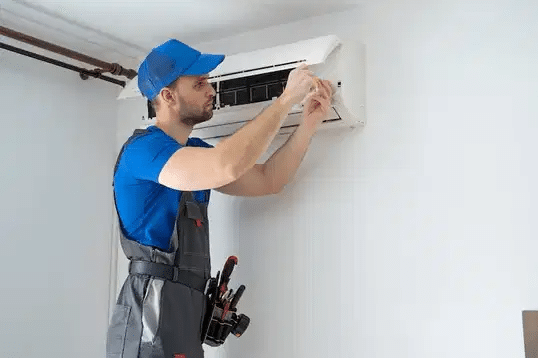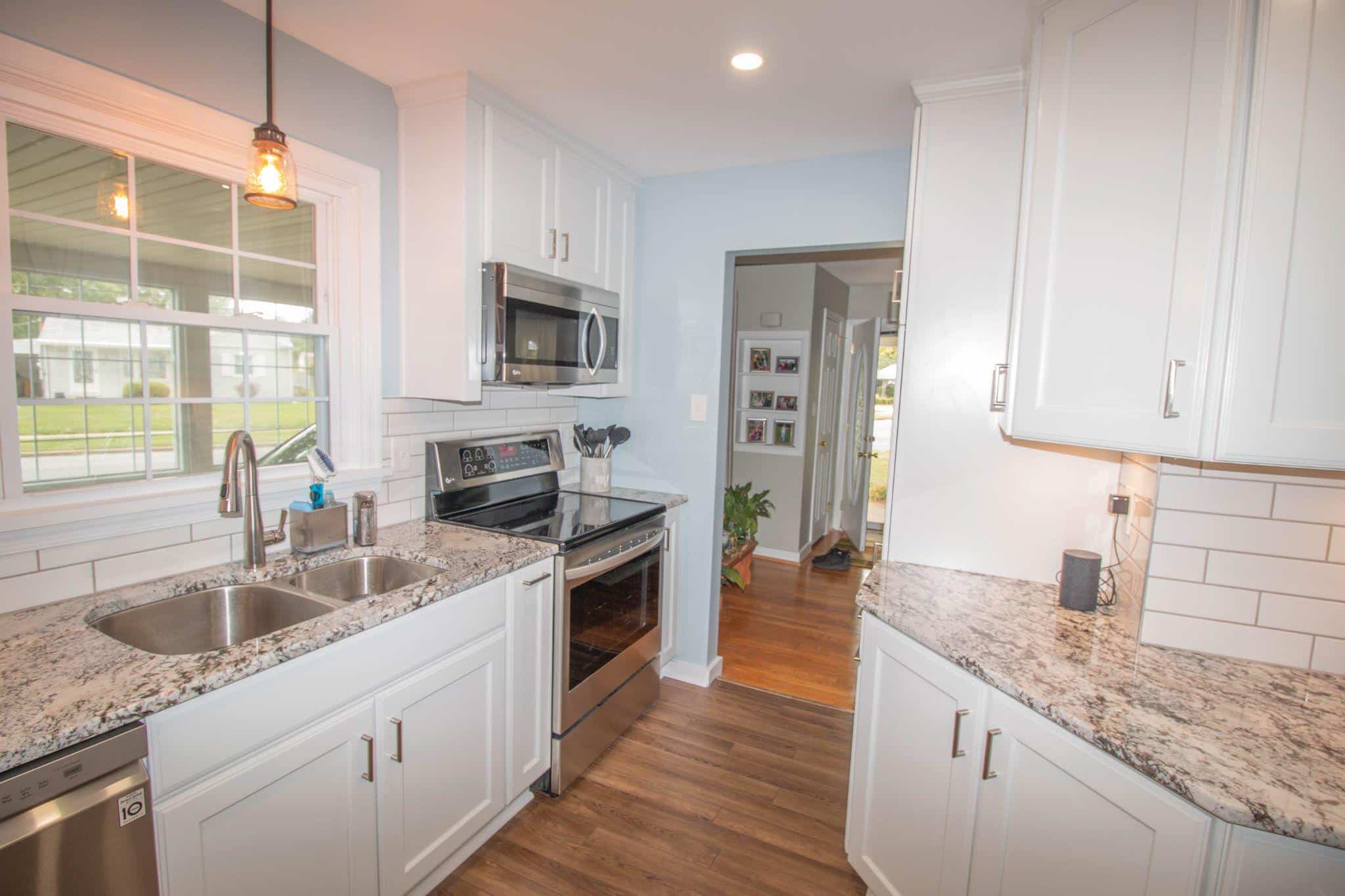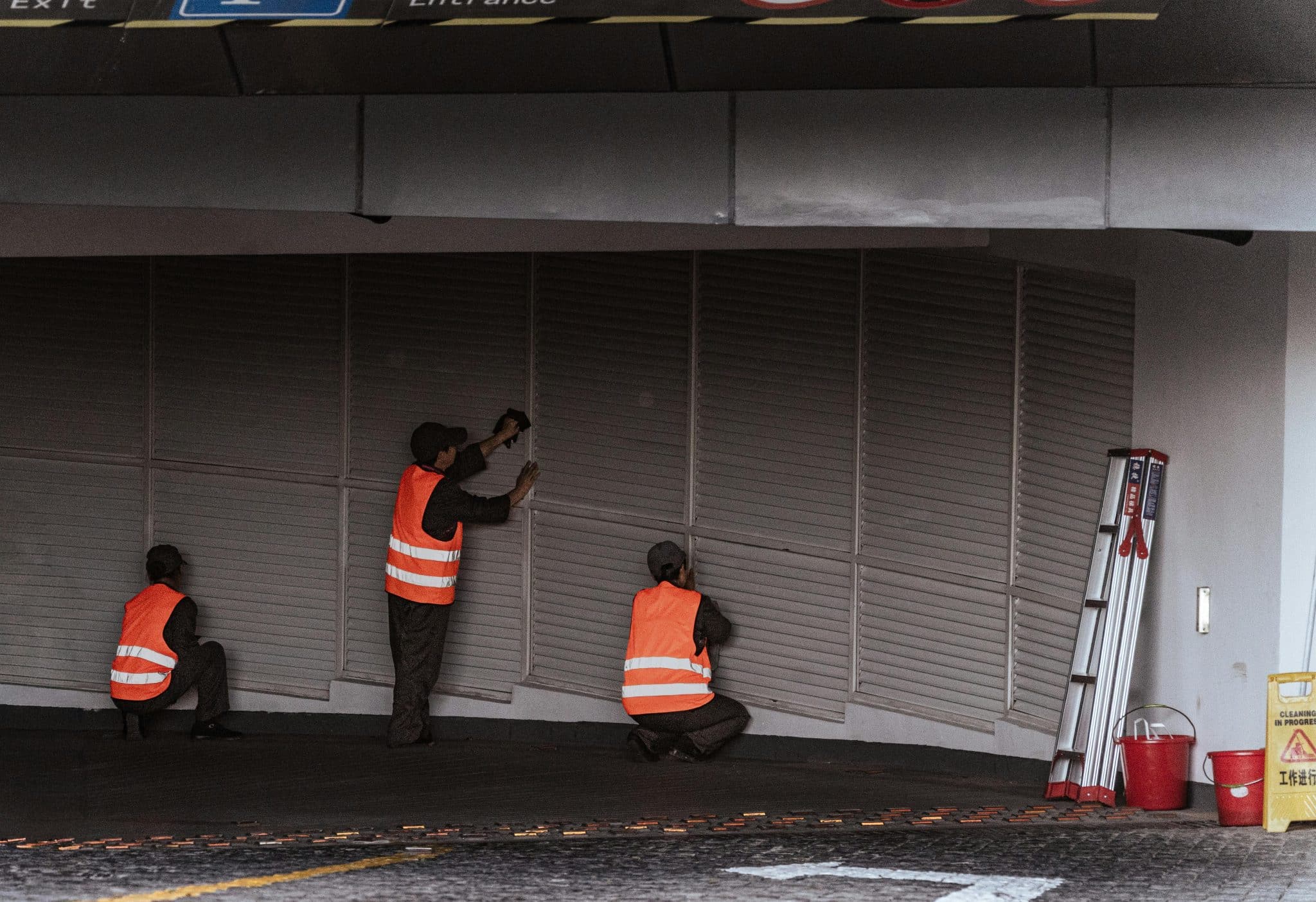Are you tired of bulky kitchen cabinets that cramp your space?
I get it. After installing floating kitchen shelves in my home, I discovered they’re not just space-savers but game-changers.
But getting that perfect, seamless look isn’t as simple as drilling a few holes and calling it a day.
I will share my detailed, no-nonsense guide that breaks down the entire floating shelf installation process.
You’ll learn the exact tools needed, proper mounting techniques, and insider tricks I’ve learned along the way.
Whether you’re a DIY veteran or just starting, I’ll walk you through each step, helping you create stunning, sturdy floating shelves that will transform your kitchen’s look and functionality.
Tools Required
| Tool | Description |
|---|---|
| Planer and Jointer | Optional tools used for flattening and squaring lumber. |
| Table Saw | Essential for making precise straight cuts in wood. |
| Miter Saw | It is ideal for making accurate crosscuts and angled cuts. |
| Drill Press | It is useful for drilling precise holes; a handheld drill can be used as an alternative. |
| Router and Router Bits | Used for shaping edges and creating grooves or decorative profiles. |
| Hand Screw Clamp | It helps in holding pieces securely during assembly. |
| Line Laser | Assists in aligning shelves accurately during installation. |
| Measuring Tools | Includes tape measure, square, and level for accurate measurements and alignment. |
| Chamfer Bit | A type of router bit used to create beveled edges. |
| Drill Bits | Various sizes are needed for pre-drilling holes for screws and hardware installation. |
| Center Punch | Marks the center point for drilling to prevent bit wandering. |
| Sandpaper (up to 180 grit) | For smoothing surfaces and edges before finishing. |
Materials Required
| Material | Description |
|---|---|
| Hard Maple Boards | Durable hardwood is used to construct the shelves. |
| Wood Glue | Adhesive for bonding wood pieces together. |
| Heavy-Duty Blind Shelf Supports | Specialized hardware that provides hidden support for the shelves. |
| Wall Anchors and Screws | It is necessary to secure the shelf supports to the wall, especially if they are not attached to studs. |
| Simple Finish/Wood Finish | Protective coating to enhance the appearance and durability of the wood. |
Step-by-Step Guidance
Step 1- Board Selection and Preparation
Select quality maple boards that fit your desired length. Measure twice, account for stud spacing, as you’ll need to hit at least two studs for proper support.
If using raw lumber, mill boards flat and square, or choose pre-milled lumber to skip this step.
Step 2- Sizing and Joining
Cut boards to match your measurements. Clean edges at the table saw.
To create wider shelves, join multiple boards with wood glue and clamps. Let the glue cure overnight for strong bonds. Then, sand the joined surfaces until they feel smooth.
Step 3- Final Sizing
Run assembled pieces through the sander for consistent thickness.
Cut all shelves to the exact length using a miter saw with a stop block for uniformity. Make shelves narrower as they go up the wall to allow better light flow.
Step 4- Support Hole Layout
Mark stud locations on shelf backs. Use a center punch at each mark to create starting points.
This helps drill bits stay on target and space holes according to your bracket requirements.
Step 5- Drilling Support Holes
Use a drill press with a fence for straight, consistent holes. Clear wood chips often while drilling.
Test fit brackets to ensure proper depth and alignment. Use clamps to keep boards steady during drilling.
Step 6- Creating Bracket Space
Make a template for routing bracket spaces. Route the areas where the brackets will be placed, working in multiple passes for clean results.
Test fit brackets to confirm proper clearance and function.
Step 7- Edge Finishing
Add angled cuts to the bottom edges using a router table. Work in multiple passes for safety and clean cuts.
Sand edges to match main surfaces. Round over top edges slightly for a better look and feel.
Step 8- Surface Treatment
Sand all surfaces to 180-grit. Remove all dust between the grits.
Pay extra attention to visible edges and surfaces. Apply your chosen finish in thin, even coats according to product instructions.
Step 9- Wall Mount Setup
Find and mark studs. Use a laser level to mark bracket heights.
Create a guide block for drilling wall holes straight. Install wall brackets, ensuring they’re properly anchored into studs.
Step 10- Shelf Installation and Adjustment
Place shelves on brackets carefully. Adjust brackets for perfect level.
Both side-to-side and front-to-back. Set the front edge slightly higher to account for future weight. Once positioning is perfect, fully tighten all hardware.
Video Tutorial
Check out this YouTube video for a detailed step-by-step tutorial on making Floating Kitchen Shelves.
Tips & Tricks
1. Orient board imperfections toward the ceiling on top shelves where they won’t be visible.
2. Use hand screw clamps to stabilize boards during drilling at the drill press.
3. Back drill bit out frequently to clear chips and prevent binding.
4. Make a drilling guide from plywood layers to ensure straight wall holes.
5. Set the front edge slightly above the level to account for future weight.
6. Check stud locations first to determine optimal shelf length.
7. Make multiple shallow passes when routing or using large bits.
8. Test all adjustments on brackets before final tightening to ensure proper shelf alignment.
Common Mistakes to Avoid
1. Missing Support Points
Failure to hit studs with mounting hardware weakens installation. Always locate and mark studs before starting your project.
2. Wrong Measurements
Taking measurements only once can lead to cutting errors. Double-check all dimensions, including the fridge’s height, width, and ventilation needs.
3. Poor Material Selection
Using low-quality plywood or thin boards affects durability. Choose the proper thickness and grade of materials rated for cabinet construction.
4. Rushing Assembly
Skipping proper glue drying time weakens joints. Allow full cure time between steps, especially after gluing and finishing.
Maintenance and Care
1. Regular Checks
Look over hardware monthly, checking for loose screws or brackets. Tighten any loose components immediately.
2. Surface Care
Clean surfaces with a soft, dry cloth. Remove spills immediately to prevent damage to wood or finish. Avoid harsh cleaners that might harm the finish.
3. Climate Control
Keep the area around the fridge well-ventilated. Check regularly for moisture issues, especially in humid conditions, and address any water signs quickly.
4. Touch-Up Needs
Keep leftover finish for minor repairs. Fix small scratches or marks as they happen to prevent bigger issues.
Conclusion
Looking back at the finished floating kitchen shelves, I can’t help but smile at how this simple project transformed my cooking space.
The sleek maple surface now displays my favorite pottery pieces, adding character while keeping essentials within arm’s reach.
The graduated shelf widths create an unexpected artistic element, while the clever mounting system ensures everything stays exactly where it should.
Remember, the real beauty of this project lies in the details—from those carefully chamfered edges to the slightly raised front that prevents unwanted slips.
Every time I walk into my kitchen, these shelves remind me that sometimes the most impactful changes come from abandoning traditional storage solutions and embracing a more open, thoughtful design approach.








